After only 90 days of fighting to root out the Taliban from a place they have owned for over a decade, Gen McChrystal called Marjah a bleeding ulcer. That was a harsh assessment given the tenacity of the enemy, the tight rules of engagement, and the limited amount of time the Marines have invested in the fight. Marjah is still being called “the most dangerous place in Afghanistan” by embedded media, which is, in my professional opinion, not true. I’ve just returned from a three-day trip into Marjah after being lucky enough to catch a ride with the CO of Regimental Combat Team 1, Col Dave Furness. There is too much information from that trip to post in one sitting so the first dispatch from the trip will cover Marjah. The other things I saw, such as Senators McCain, Lieberman, Graham, and Gillibrand at the Nawa District Center, will have to wait.
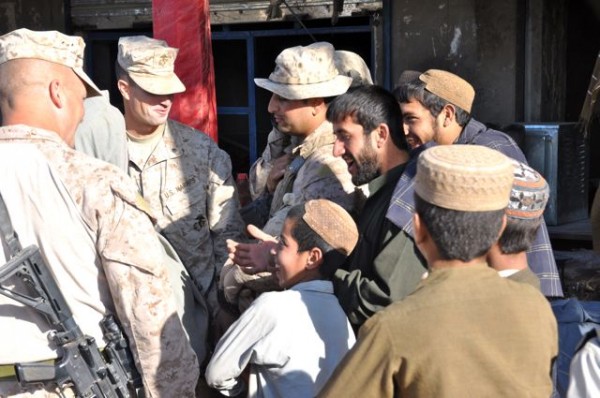
Counterinsurgency requires boots on the ground when needed and time. The Marines have been at this task (clearing Helmand Province) for nine months, and they are winning. However, it is not easy, and it comes at a high cost in terms of both treasure and blood. Despite this, the one complaint I heard from virtually every commander I spoke with concerned their ability to rapidly employ the most potent tool in their arsenal—money. They feel the clearing is about done, so it’s time to start the “holding’ piece. Holding takes money, and money comes from a disbursment bureaucracy incapable of rapidly dispensing funds.
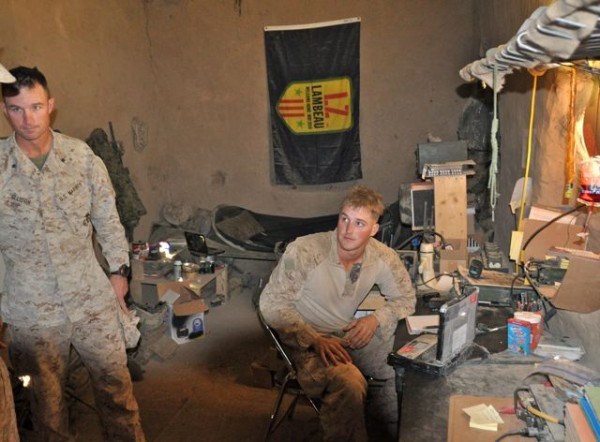
We entered Marjah on the afternoon of 11 November, heading directly to one of the dozens of platoon combat outposts (COPs) that dot the Marjah area. We were heading for an important ceremony, but not one we would wish on anyone else. A painful yet important ritual designed to honor the dead while assisting the living in dealing with the loss of comrades they knew intimately and loved deeply. That is the dynamic of infantry – you know your fellow Marine better than anyone else in the world knows him. You may not always like every member of your platoon, but you love all of them. And there is no doubt in the mind of an infantry Marine that the men he is with will instantly and willingly take suicidal risks to help him if he is in trouble. Memorials are tough, and this one was especially difficult for the very tight 3rd Platoon, Echo Company, 2nd Battalion, 6th Marines because they were saying goodbye to their leader.
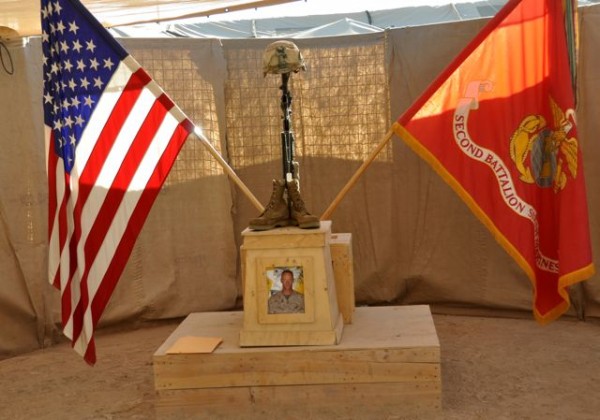
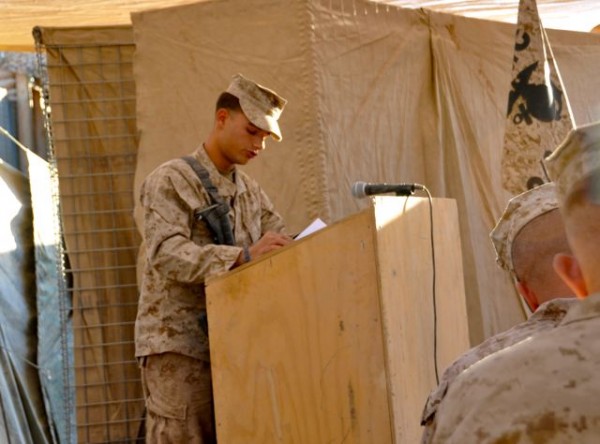
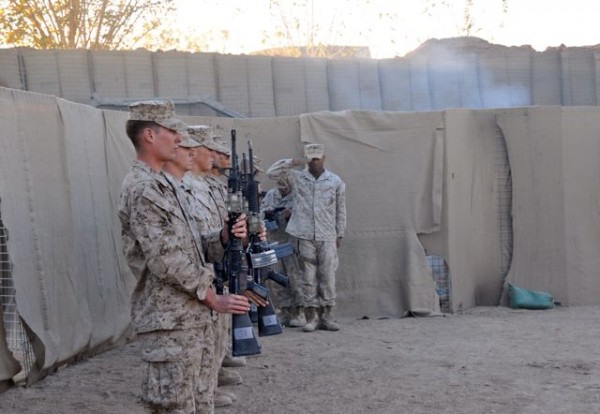
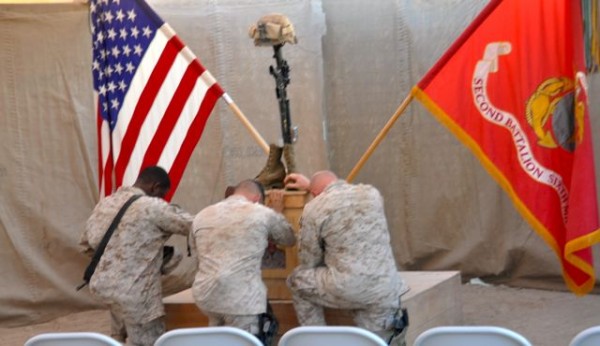
This was my first visit to a Marine COP, and I wished it had been for another purpose. Marjah is rapidly healing, but that doesn’t mean the Taliban has given up and gone to ground.
The 2nd Battalion, 6th Marines, is currently responsible for the southern, central, and some of the northern portions of Marjah, which is actually a series of villages organized around a gigantic grid of canals built by US AID in the 1960s. They are expanding their control block by block by spreading their Marines out into platoon and squad-sized outposts from which Marines constantly patrol on foot. The villains still offer battle, but only on their terms, which means when they fire at a patrol, they have already set up IEDs between their positions and the Marines. The Taliban have learned through bitter experience that Marine infantry maneuvers aggressively while employing precision supporting fires and will close with and destroy those who stand and fight them. The Taliban started to use small arms in an attempt to lure aggressive Marines into mine fields full of improvised explosive devices. Now, the Marines maneuver to engage the teams with small arms, and then swarm them with other units coming in from different directions or with precision fire from drones. That’s the purpose of establishing multiple small portions from which to patrol 24/7.
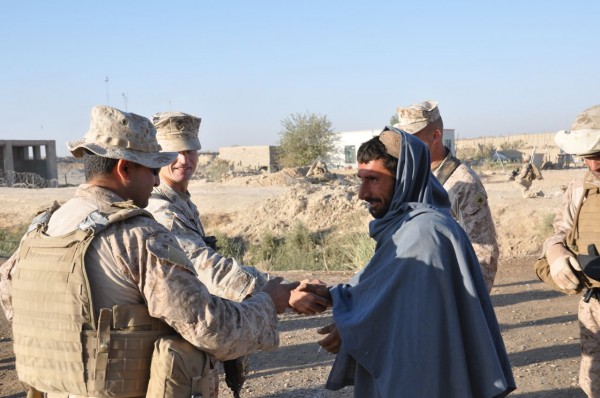
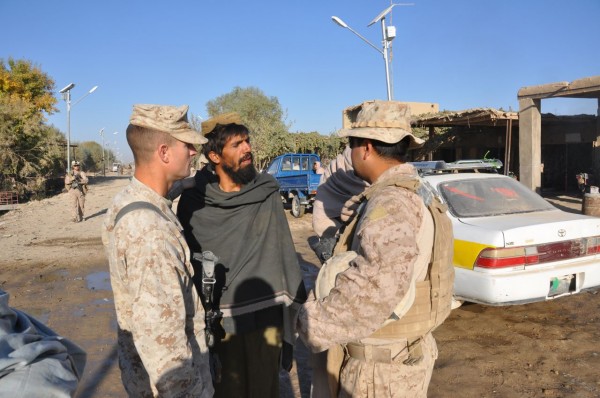
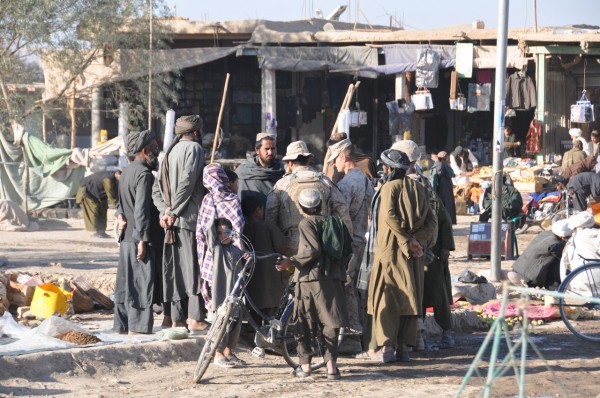
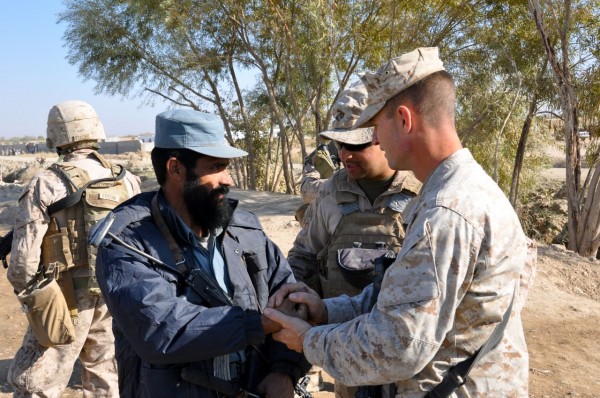
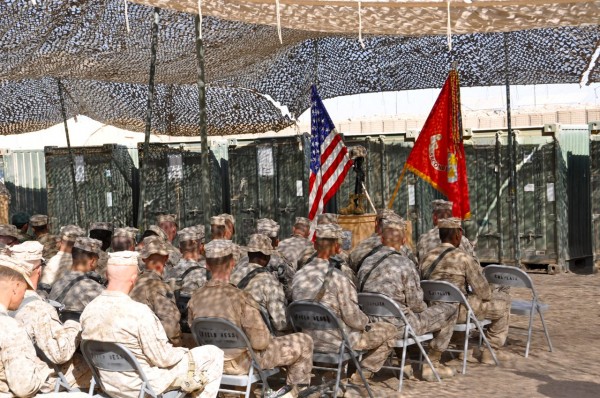
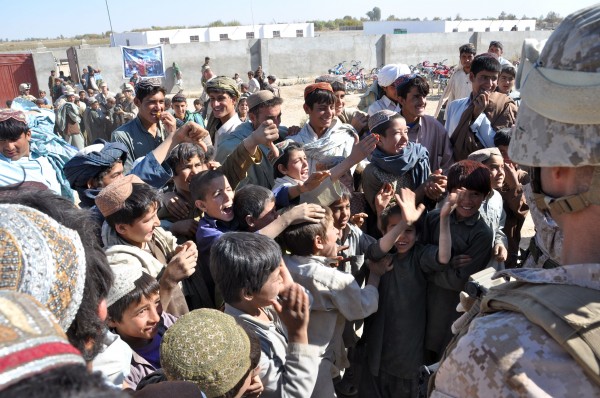
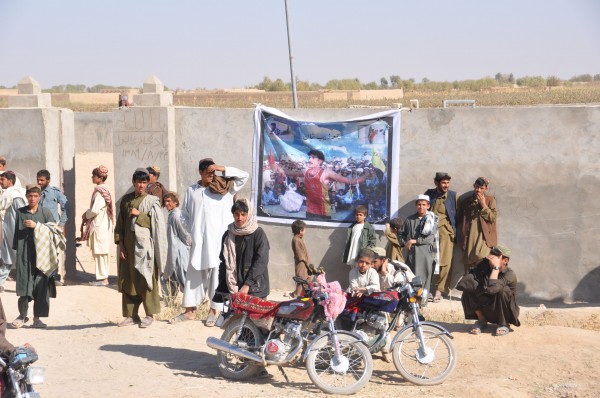
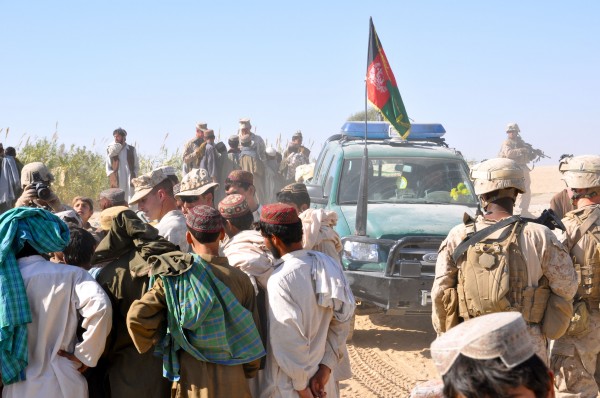
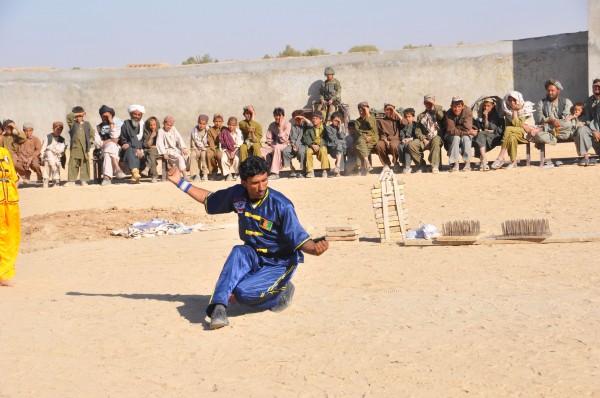
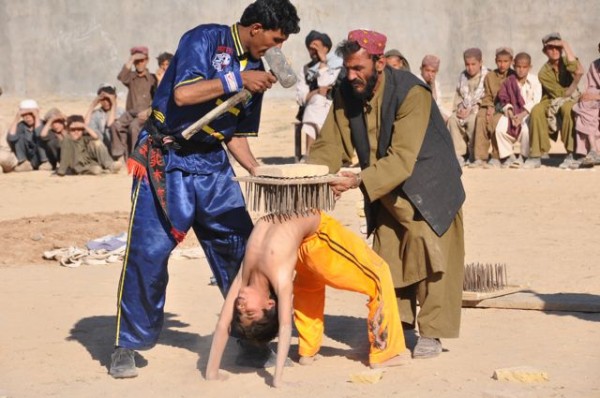
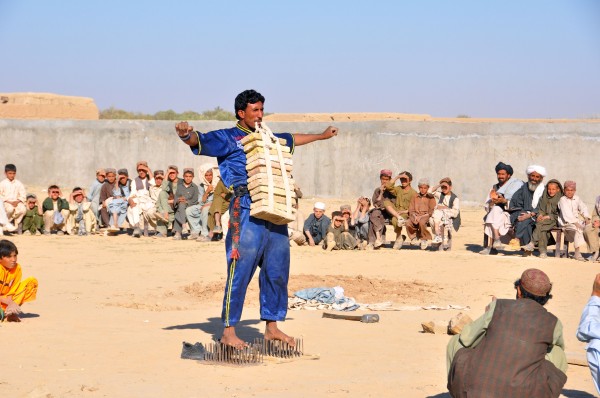
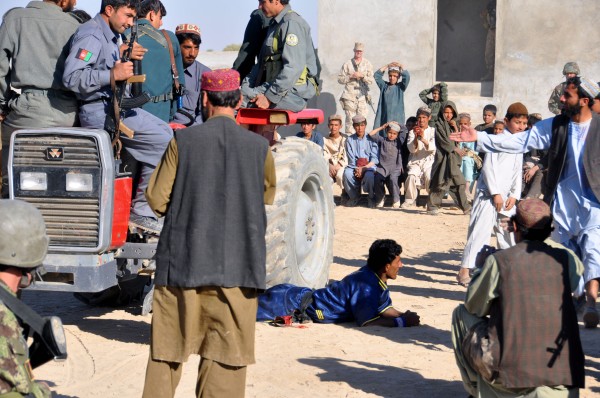
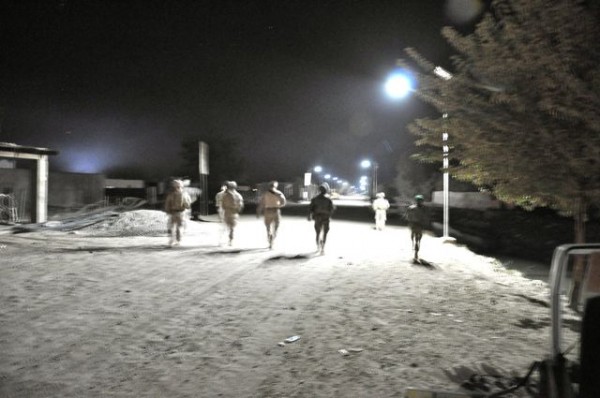
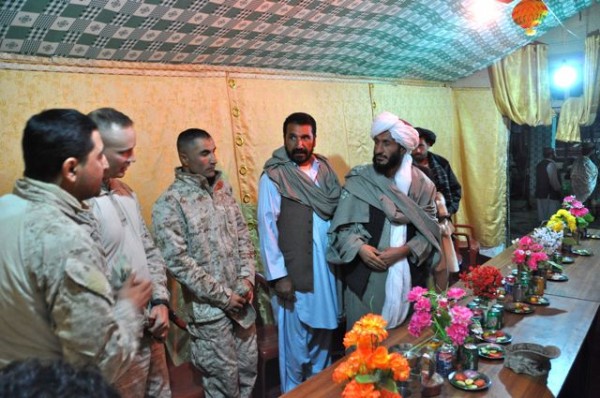
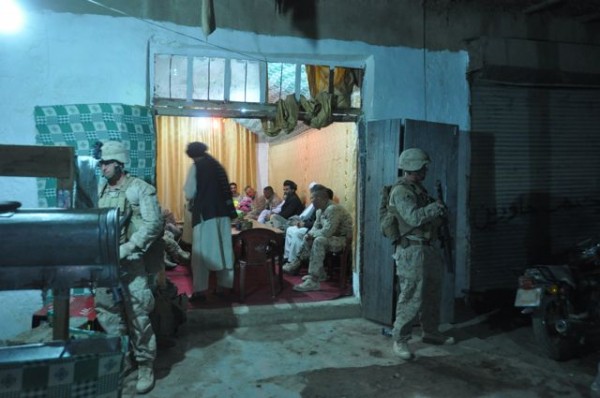
Marjah is no longer the most dangerous place in Afghanistan. That distinction belongs to Sangin, where Col Paul Kennedy is leading the 2nd Regimental Combat Team, in a very stiff fight to secure the area. The Marines’ approach to conducting the counterinsurgency fight has caused some friction with our allies, who believe they are too aggressive. They are, without question, the most aggressive fighters in Afghanistan, but they are also proving to be the most adept at holding the ground they have cleared. The battalion that proceeded 2/6 in downtown Marjah, the 1st Battalion of the 6th Marines, had a 90/10 IED find rate. Only 10% of the IEDs targeting them detonated, and the others were either detected by the Marines or (in a vast majority of the time) were pointed out to the Marines by the local population.
Colonel Furness told me there was a Corporal in 3/1 (deployed in the South around Khanishin) who had an uncanny ability to spot IEDs. His squad wanted him on point every day. 49 times there were IEDs placed to target them, and 49 times this Corporal found them first. Know what you get when you find mines targeting your squad 49 times in a row? Probably a lot of love and respect from your fellow Marines, but you don’t get a combat action ribbon because when you find the mines, every time the villains don’t shoot. Mine blasts are used as the signal to attack with small arms, and the Taliban are not known for their ability to contingency plan, so when the mine doesn’t blow, they slink off. Imagine that, seven months of constant patrols in a kinetic environment, but because you are so good at spotting mines, you don’t get to wear the coveted combat action ribbon. Col Furness isn’t a big fan of that order, but it is an order, so as 3/1 was leaving, he showed up at a company formation and meritoriously promoted the kid to Sergeant. “It was the least I could do – the kid deserved a hell of a lot more… I wish I had 100 just like him.”
Here is another story you don’t often hear. Today, one of the squad patrols from 2/6 was stopped by a local man who wanted to turn in his son for being Taliban. He had told the kid over and over that he did not want him fighting for the Taliban, whom he believes to be un-Islamic. The father and one of his other sons went to the district center to have their statements videotaped, and after doing so, his son was arrested.
Counterinsurgency is a time-consuming endeavor, and it is particularly taxing on the men and women who are doing the fighting. The question is not can we prevail, but will we be allowed to prevail, and that question can only be answered by our Commander in Chief. The President can only “vote present” on Afghanistan for so long. He needs to tell the American people and our allies what we are trying to accomplish in order to define an end state. The “July 2011 drawdown” of forces is neither a plan, an end state, nor a good idea. It is an abdication of leadership for a meaningless date, predicated on nothing more than political calculation. Our president is rumored to be a very smart man. It is time for him to prove it.



Thank you again for your time to document and share your world and the lives of our Military personnel in service, right here, right now.
Much appreciated.
Thank you very much sharing this, your posts are always very fascinating and the pictures especially are wonderful. Keep up the great work and stay safe!
Thank you for this wonderful account of Marjah. Can’t wait to read more. Love that the CO is going into town to mingle with the locals. That’s what I thought everyone was supposed to be doing!
Baba Tim,
To state the obvious, to a large degree success in Helmand reflects Taliban relocating outside of Helmand as well as the overwhelming allocation of ISAF/GIRoA resources to Helmand, home to only 4% of Afghans. Development aid galore, much of the civilian surge, 15 K Marines, 9 K Brits, about 2 Georgian bns, 1 Danish bn, 300 Estonians, Bahrain, another ISAF country, 9 ANA combat infantry battalions [36 ANA combat infantry companies], 2 ANCOP combat bns, 6 K AUP. Obviously they are winning.
What are your impressions about Helmand men joining the ANA and ANP? Thoughts on the rate of improvement for 215th ANA Corps and Helmand AUP?
Glad you are now in one of the safer areas of Afghanistan. Helmand being safer than Nangarhar and all. Though not for the right reasons. 🙁
Disagree that Sangin is the most dangerous place in Afghanistan. Though again not for the right reasons. 🙁 Regarding Sangin, would you send them additional Marines [by transitioning other parts of Helmand to the ANA more quickly] or additional ANA?
The only good ANA in the province are probably BG Ghori’s 3-215. But to my knowledge they are occupied elsewhere.
To change the topic completely, looking at it from a macro perspective; how long can the ANA, AUP and ANCOP afford to send the kitchen sink to Helmand and Kandahar when GIRoA/ISAF are losing in Logar, Baghlan, Konar, Nuristan, Logar and Nangarhar?
I guess this is a good point to weigh in on the discussion – you guys crack me up and I really appreciate the debates which add so much to the blog. I understand that the success I am seeing is localized, limited and fragile. But it is the first time I have seen infantry operating in a manner that secures the population. As we drove around Marjah we saw dozens of foot patrols by Marines with attached ANA. When on foot we saw mounted patrols rolling around the large blocks. There are rifle companies in Marjah with 15 patrol bases in their AO but the terrain and enemy allows that kind of aggressive force projection. But I don’t have the answers for how to replicate what I am seeing through the rest of the country. You could not deploy the same way in Kunar – the terrain prevents mutually supporting positions which would make logistically supporting dispersed operations impossible. Yet I think it is important to bring to light the best practices I have seen to date.
Having said that my observations have been limited in nature. I really have no way of evaluating ANA or ANP units. What I can say is that the Kandak in Marjah has their COC located right next to the Marine COC and on all the COPS we visited the Marines and ANA live side by side. The Marines tell me that more and more they see ANA in the gym working out like Marines do and that they obviously try to emulate them while on patrol. They also tell me the ANA’s biggest problem is with marksmenship – something the Marines take very seriously. The ANCOP’s – Afghanistan National Civil Order police are pretty good. Most of them are Tajiks from the north – they go through special Marine Corps training at Camp Leatherneck and have Marine Corps pattern uniforms. The Marines consider them to be very effective. I’ll talk about them in a future post.
What I saw in Marjah was positive and that’s really all I can say. Except for I wish I had been seeing this kind of counterinsurgency work all along – things would be much better for all of us if I had.
excellent job!A great story and great pictures to go with it.I hope your projects go well.
Is the opium production actually going down or was this a Friday Night Folly concocted by ISAF HQ? Street price of H in California is still $30/g and it’s everywhere.
The nature of guerrilla warfare is to go where the enemy isn’t, so this will continue to occur until either the people stabilize the country themselves or the Taliban win. It is conceivable that certain provinces remain Taliban strongholds. July ’11 is only 8 months away and Dear Leader has a way of dithering.Maybe he can trld be best for any hope of maintaining and increasing stability. It would also be a blow in itself to the bad guys.
Outstanding post Tim. We will have to wait and see what happens next year tho. Today on dateline McCain stated we would not leave afghanistan,when told what karzai said in the NYTs oh he’s just scared,we are not leaving ever? will see. and like the solar power streetlights nice thought.
1. Photo caption: “There is nothing easy about being an infantryman in combat.”
2. Nothing.
3. Says it all.
4. God bless and keep those young Marines -and yourself, of course.
V/R JWest
Was this an actual “road trip” to Marjah ? or was it necessary to fly in? How far outside of Marjah would the road be considered “safe” This “Marjah” how far in kilometers did you travel from the bazaar were you able to travel? how far out do the patrols go?
We drove to Marjah from Camp Dwyer which is south about 30k and out in the desert. The terrain and nature of the local fighters makes driving around in the MRAP’s pretty easy. Unlike fighters in the East who have terrain which facilitates their ability to ambush from mountains the southern fighters won’t ambush MRAP’s because the combination of flat terrain, thermal sights and heavy machineguns make such a move suicidal. Plus the Marines don’t play the “back to the FOB for chow” game. If they are ambushed and the villains run into a compound the Marines will surround the compound and bring in reinforcements. They are not interested in seeing any fighters who take them on live to fight another day.
The main bazaar is just outside of the large almost empty base which houses 2/6 so when we were walking slick we were not far from home as it were. We went to other bazaars which were about 3 to 5 k out in the “blocks” of Marjah but on those trips the Marines were in full battle kit. We arrived at one bazaar just after a short firefight and could hear a rather large engagement close by when we went to the third bazaar. Marjah is not a big place but we did the same in Nawa which is a large area geographically. At risk of sounding like a broken recored I have to stress this is the first time I have seen real counterinsurgency in action – it may be too little too late but it sure was a good thing to witness first hand…finally.
I expect info on exactly how big an area is being discussed would dismay a lot of people at the resources being used.
Fantastic to see the Marines do what 3 PARA tried to do in 2006 but couldn’t due to sheer lack of numbers. Absolute crime that instead of getting people like the USMC who had the same idea as 3 PARA to join the party, those in power decided to fart about for 3 – 4 years instead.
Glad you guys are in there making up for lost time!!!
There is nothing wrong with the boys in 3 Para – they are excellent infantry but nothing replaces having enough boots on the ground. In that respect the Marines have a built in advantage because their battalions are designed to function in the face of heavy casualties which is a legacy from WW II. Marine rifle companies, depending on their augmentation (which is determined by the mission and task organization) can number well over 400 men which in other armies would be considered a battalion sized unit. A Marine battalion can, on average, cover an area of operations which would be assigned to a European Regiment again based on the amount of combat power and manpower organic to those battalions. Size matters in counterinsurgency warfare and the Marines table of organization, which was designed to accomplish the bloody business of forced amphibious assaults, makes them ideal for the counterinsurgency fight.
Thats put it more eloquently than I ever could 🙂 Those Marines in numbers have made all the difference on the ground. Just a pity that the media in the UK have tried to pit American Marine against British squaddie. Those idiots are wrong because this is a great example of Anglo-American co-operation 🙂
I love your blog! My husband is in Afghanistan with the Army and it is so refreshing to read what is really going on there and not just the liberal media’s twist on it. I always feel a lot better when I read your blog and know that it’s not as horrific as the news makes it sound. Thank you and take care!
Yeah Tim this is a good read wish other units would mimic the marine.{it seem to work}”please don’t leave and let the taliban come back” I have seen this statement many times before and feel that most afghans feel the same way. In fact in the news here it is said that some are digging up there guns for the day when we pull out. It seem the average afghan feels that the taliban will take over no matter what they tell karzai. Tim have you felt or heard something along these lines.?
Thank you for the excellent report. The pictures are great. The troops are outstanding. Let’s hope the politicans keep up with these quality.
Baba Tim,
Great read, thanks! Some questions, though: Are the force projection and TTPs you’ve described here not used by Army units in the rest of the country? If no, why not? Your point on the difficult logistics is taken to heart, but there’s got to be a way to overcome that and still patrol aggressively and create a clear, strong, lasting presence in the community or AO. Is it an organizational/institutional issue? I’ve read about some Army units that are very aggressive, but none seem to be having the success the Marines are in Helmand. My impression is that the Marines have taken the lessons they learned in al-Anbar several years ago and are applying them successfully. Why does it seem that the Army has not done the same?
Many thanks!
BD
Great post. The pictures really tell the story. Thanks for giving us all your perspective on how its going over there.
Lt. Zimmerman was a friend of mine and we trained together as Marine officers. I was deeply distressed to learn of his death. Thank you for the wonderful postings of his memorial service.
Brad, I am very sorry for the loss of your friend. The death of any American service member is a terrible loss, and my heart goes out to the friends and loved ones they leave behind. Keep the faith in his honor, as we all must for each warrior who has made the sacrifice. Beyond that, I cannot find the words to express my sympathies.
This is an interesting move (http://www.foxnews.com/world/2010/11/19/report-deploying-battle-tanks-afghanistan/). Is it a game-changer, or just an addition to the fire support toolbox of the infantry? Is it useful only in Helmand, or should MBTs be sent to all the major combat zones? I would greatly appreciate feedback from those more knowledgeable than me.
14 USMC M1s sounds like tankers wanting to play more than a serious need for armour.
The Italians have heavy tracked APCs in Farah, about half the size of a M1, and they primarily serve to destroy local infrastructure. There are always unintended consequences and these Marine tanks will cost a lot to have in theatre- not that many folks seems to care about the cost of the war.
The Canadians have been quite successfully operating about two companies of Leopards (one each of Leopard 1 and Leopard 2) in the same region for several years.
At one point there was also a single platoon of Dutch Leopard 2’s operating in the same region, no idea if they are still there or not.
The Germans briefly operated some of their Weasel tankettes in the north for a while, don’t think those are still in country. The Germans have recently begun operating some of their Marder heavy APC’s as well.
The Italians are operating at least ten of their Dardo heavy APC’s in Farah (confirming).
The USMC is already operating their Breacher M-1 CEV’s in the same region. Canadian Leopard 2’s have been photographed operating alongside of those Breachers.
===
All of the usual caveats regarding tracked armored fighting vehicles apply. Including the tremendous logistics requirements. This explains why all of the heavy tracked AFV’s in Afghanistan combined are just barely enough to fill out a full battalion.
That being said, in combat as in drag racing, there is no replacement for displacement, and bigger is always better.
At the platoon and company level, a single M1A1 provides a force multiplyer that the Taliban are just simply unable to counter or deal with at the present.
===
Mr. Harlan, with all due respect, I normally agree with you on most points, but…
You’re correct. I do not care about the financial cost of this war, in and across all of its many fronts and theaters. I care about winning this war. We can worry about its cost afterward.
DURATION,
R
Thank you for this blog, pictures and your insight as to what our Marines are really doing in Marjah. My husband is with 2/6 and I’m glad to see they are making a difference but we’re excited this deployment is coming to an end. It has been a tough one.
Pyrrhic victories should be avoided. “Winning” means nothing without the cost taken into account. Since 2001 the ability of the enemy to inflict damage on the west has gone up. We are losing the war because of the failure to correctly select the aim and then limit resources to those required to achieve them. Minor tactical success at huge cost in small parts of Afghanistan have not resulted in strategic success.
The failure to care about the cost is the biggest failure of the US military. It has consumed resources, paid for with money largely borrowed from China, without regard to the damage done to the US economy. This is the essence of the COIN versus CT debate- limiting the self inflicted wounds a large foot print brings.
Very good article, gave excellent insight as to the hurdles of the mission as well as the huge successes. Thank you for the hard work, dedication and terrific pictures. My son is with 2/6 and you gave me yet another reason to be tremendously proud of his contribution to this mission. Just a terrific piece!
You spoke about Sangin. I have just recently been visiting Sgt Jonathon Blank of Force Reconnaissance Co. in Bethesda Naval Hospital who lost both legs to an IED the last week in Oct. He told me they were occupying a compound and had been walking over the same spot for over a day before the ground softened enough for the pressure plate to trip. This place sounds like hell on earth.
Regarding the CAR what is up with the Marine Corps and their stinginess with medals? Don’t Army guys get the CIB if they are just in a hot zone? Is one bullet flying over your head enough to qualify?